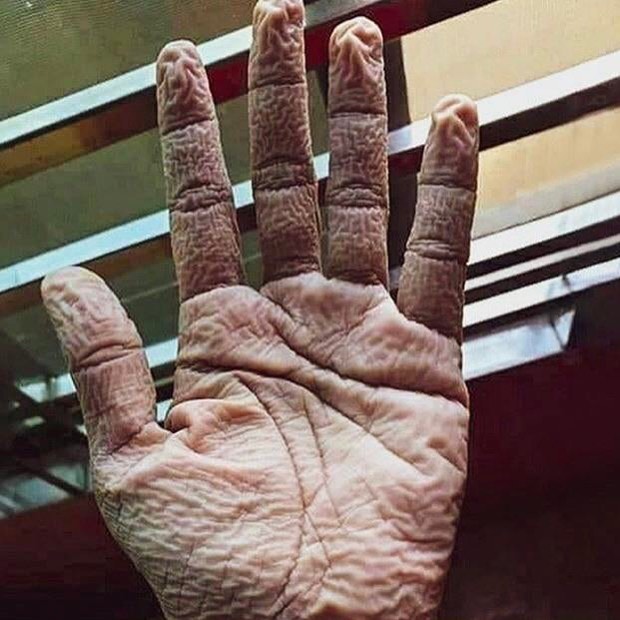The hand of a doctor after removing his medical precautionary suit and gloves after 10 hours of duty.
Background
The use of examination gloves is part of the standard precautions to prevent medical staff from transmission of infectious agents between patients. Gloves also protect the staff from infectious agents originating from patients. Adequate protection, however, depends on intact gloves. The risk of perforation of examination gloves is thought to correlate with duration of wearing, yet, only very few prospective studies have been performed on this issue.

The durability of examination gloves used on intensive care units
Authors: Nils-Olaf Hübner,1,2Anna-Maria Goerdt,3Axel Mannerow,1Ute Pohrt,4Claus-Dieter Heidecke,3Axel Kramer,1 and Lars Ivo Partecke3
Methods
A total number of 1500 consecutively used pairs of examination gloves of two different brands and materials (latex and nitrile) were collected over a period of two months on two ICU’s. Used gloves were examined for micro perforations using the “water-proof-test” according to EN 455–1. Cox-regression for both glove types was used to estimate optimal changing intervals.
Results
Only 26% of gloves were worn longer than 15 min. The total perforation rate was 10.3% with significant differences and deterioration of integrity of gloves between brands (p<0.001). Apart from the brand, “change of wound dressing” (p = 0.049) and “washing patients” (p = 0.001) were also significantly associated with an increased risk of perforation.
Conclusion
Medical gloves show marked differences in their durability that cannot be predicted based on the technical data routinely provided by the manufacturer. Based on the increase of micro perforations over time and the wearing behavior, recommendations for maximum wearing time of gloves should be given. Changing of gloves after 15 min could be a good compromise between feasibility and safety. HCWs should be aware of the benefits and limitations of medical gloves. To improve personal hygiene hand disinfection should be further encouraged.
Credits
Source of the case report: https://www.ncbi.nlm.nih.gov/pmc/articles/PMC3666964/
Source of the image: Awanish Sharan
https://twitter.com/awanishsharan/status/1273809215107153920?lang=en